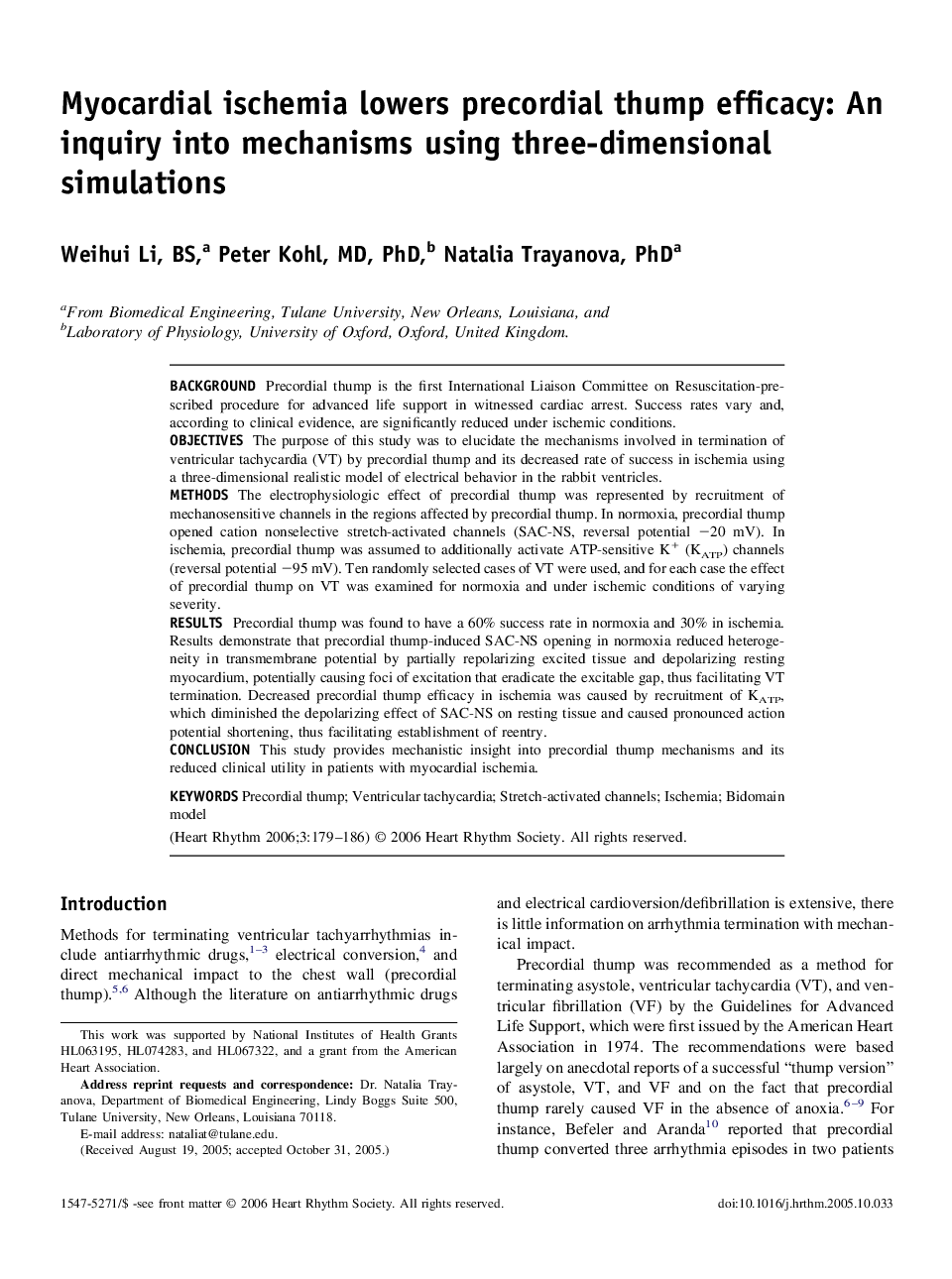| Article ID | Journal | Published Year | Pages | File Type |
|---|---|---|---|---|
| 2924583 | Heart Rhythm | 2006 | 8 Pages |
BackgroundPrecordial thump is the first International Liaison Committee on Resuscitation-prescribed procedure for advanced life support in witnessed cardiac arrest. Success rates vary and, according to clinical evidence, are significantly reduced under ischemic conditions.ObjectivesThe purpose of this study was to elucidate the mechanisms involved in termination of ventricular tachycardia (VT) by precordial thump and its decreased rate of success in ischemia using a three-dimensional realistic model of electrical behavior in the rabbit ventricles.MethodsThe electrophysiologic effect of precordial thump was represented by recruitment of mechanosensitive channels in the regions affected by precordial thump. In normoxia, precordial thump opened cation nonselective stretch-activated channels (SAC-NS, reversal potential −20 mV). In ischemia, precordial thump was assumed to additionally activate ATP-sensitive K+ (KATP) channels (reversal potential −95 mV). Ten randomly selected cases of VT were used, and for each case the effect of precordial thump on VT was examined for normoxia and under ischemic conditions of varying severity.ResultsPrecordial thump was found to have a 60% success rate in normoxia and 30% in ischemia. Results demonstrate that precordial thump-induced SAC-NS opening in normoxia reduced heterogeneity in transmembrane potential by partially repolarizing excited tissue and depolarizing resting myocardium, potentially causing foci of excitation that eradicate the excitable gap, thus facilitating VT termination. Decreased precordial thump efficacy in ischemia was caused by recruitment of KATP, which diminished the depolarizing effect of SAC-NS on resting tissue and caused pronounced action potential shortening, thus facilitating establishment of reentry.ConclusionThis study provides mechanistic insight into precordial thump mechanisms and its reduced clinical utility in patients with myocardial ischemia.
